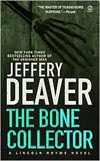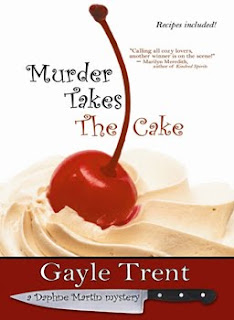by: Peg Herring
Maybe you’ve got an idea. Maybe it’s a half-finished manuscript. Maybe you’ve got a whole novel
First, fan conferences. As a voracious reader and an aspiring writer, I was surprised to learn that there were gathering places where fans could meet their favorite authors, hear what they have to say about writing, and (of course) buy signed copies of their books. My first venture into the world of publishing was a small fan conference, Magna Cum Murder in Muncie, Indiana, and it was a lucky choice. At small cons writers and readers mix informally, and the panels often focus on how an author comes up with a story and follows it through. The writers I met there were very friendly and helpful, answering my amazingly naïve questions with tact, maybe because many of them were only a year or so ahead of where I was at the time. Small cons allow a person to meet authors, but they’re also good places to ask questions, listen, and learn.
Some conferences are more attuned to writers, and over time there seem to be more and more of those: fewer fans in attendance, more authors seeking contacts, publicity, and encouragement. (It’s a bit ironic, because we all end up trying to sell our books to each other.) Still the author conference can be helpful in the exchange of ideas and information, the chance to meet editors, agents, and others in the publishing business, and the discussions of what’s hot, what’s fading, and who’s looking for what. Panels often focus on “How to Sell” and other topics of more interest to writers than to readers.
How do you tell the difference between fan and author cons? Sometimes it’s difficult. Fan cons try to interest readers; author cons focus on aspects of writing and publishing. Author cons often have pitch sessions with agents and editors; fan cons will have “Meet the Author” opportunities. Most try to appeal to both readers and writers, but the schedule of events reveals whether the con leans toward fans or authors. Either can be helpful if you attend knowing what you’re paying for.
The third event an aspiring writer may want to attend is the writing workshop, and some cons have these included in their programs or available for an extra fee. A workshop should focus as much as possible on your genre; otherwise, you spend a lot of time listening to instruction that doesn’t apply to you. Look for workshops that don’t just benefit the presenter. You may receive invitations to workshops that claim to enhance your chances of publication from agents, authors, and others in the business. Think about it: are they trying to help you, or trying to line their pockets? Universities often offer writing courses, and they can be very helpful, especially in less commercial genres. However, a university workshop given by a professor who publishes scholarly texts will probably not help you sell your romance novel. Workshops offered or suggested by organizations focused on your genre(Sisters in Crime, Mystery Writers of America, Romance Writers of America, etc.) will probably be the most helpful. The presenters will be professional and the purpose genuine, so look on the website of the professional organization closest to what you’d like to publish.
A good workshop should be hands-on, should provide take-along helps you can refer to in the future (you won’t remember it all), and should have an instructor that has succeeded in the field you’re interested in. If the instructor hasn’t published recently in your field, he’s liable to misinform. For example, I once heard an author tell a crowd of aspiring writers that they should NEVER submit a query by email. His contention was that agents and editors “deserve and expect the courtesy of a real, stamped letter.” That might have been true a few years ago, but today’s professionals often operate totally by email, so his advice was outdated and possibly harmful.
One way to learn about workshops is from others who’ve taken them and found them worthwhile. The web is a great place to look: blogs, websites, and author sites can give valuable information, but again you don’t know what you’re getting into sometimes. Early on, I signed up for an on-line workshop on how to write a good query letter. I only paid twenty dollars, but even so, I was disgusted at the Mickey-Mouse, Little-Miss-Sunshine nature of it. Everyone got “Oh, you’re so creative!” and there was no instruction at all, just “Let’s all write something and post it for everyone else to see,” sort of a blind-leading-the-blind approach. Obviously, the instructor was raking in money from naïve people like me who wanted to know how to grab the attention of an agent, and she was giving away nothing in return.
A workshop or conference can be daunting. Honest analysis and feedback from people in the business can be harsh, and you’d better be ready to hear truths about publishing and somebody’s opinion on what’s wrong with your writing. Talking with others may help you find the most nurturing cons and workshops that are helpful, not ego-smashing.
What do conferences and workshops provide? Networking- one of the most important things for a writer. Ideas-talking with others ignites the creative spark and encourages a writer to keep going. And excitement-it’s fun to rub elbows with those who’ve made it, meet those who are on the way up, and commiserate with those who are still trying to get a toehold.
Author: Peg Herring
Published: January 22, 2010 by Five Star
Series Name: A Simon & Elizabeth Mystery
Category: Historical mystery
Main Character: Simon, Elizabeth Tudor
In London, headless corpses of beautiful women are found, haunting Henry VIII with memories of his own beheaded wives. Unknown to the King, his daughter Elizabeth joins with Simon Maldon, the crippled son of a respected physician, to find the killer.
Wolfmont Publishing as a Toys for Tots fundraiser. All are available at amazon.com.
Website: http://www.pegherring.com/





















